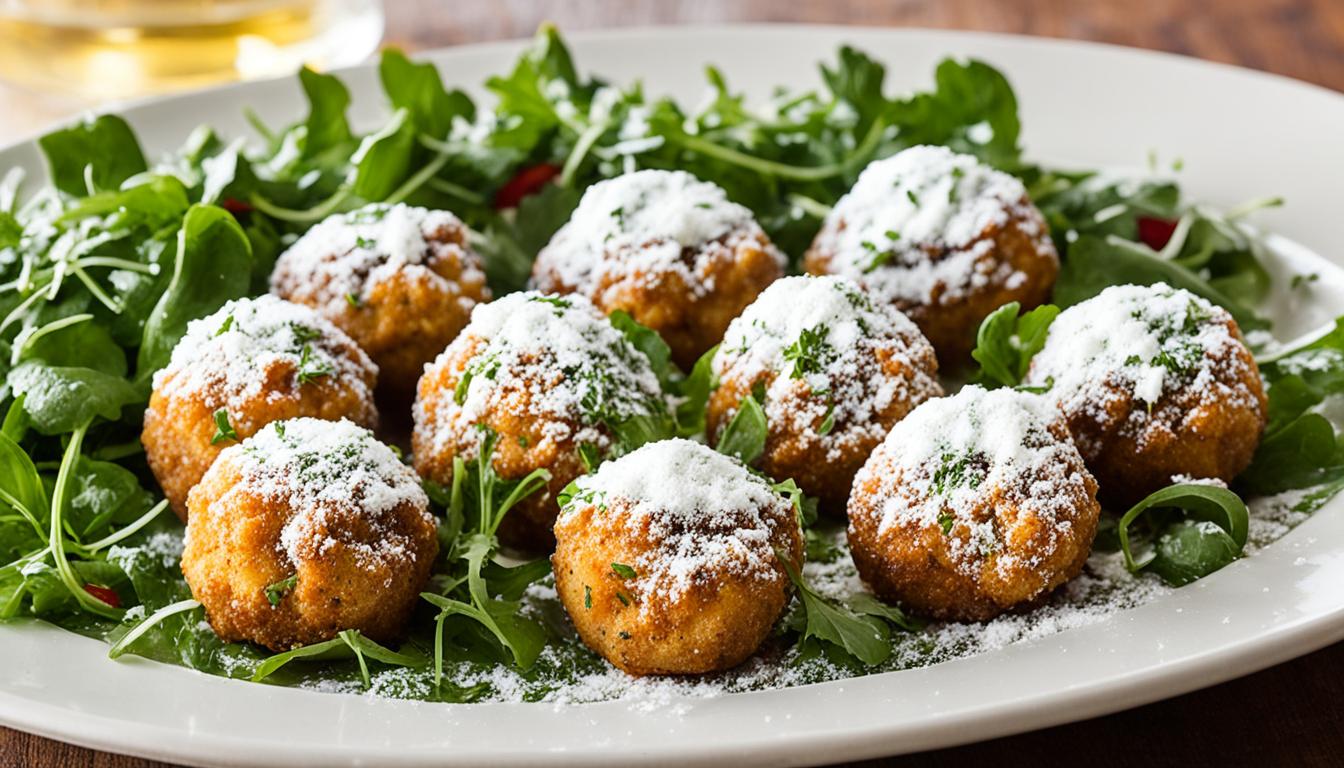Did you know that in Buenos Aires, a traditional Italo-Hispano restaurant once ran out of lasagna, leading them to serve an unexpected dish that would forever change our perception of comfort food? This serendipitous moment introduced us to the delightful albondigas de ricotta, a unique blend of Argentine cuisine and traditional dishes. As we delved into the origins and preparation of this ricotta meatball delight, we discovered a world of Latin American recipes and authentic flavors that have become a cherished part of our culinary journey.
Discovering the Delightful Albondigas de Ricotta
Our first experience with the captivating albondigas de ricotta was entirely unexpected. We were dining at a traditional Italo-Hispano restaurant in the heart of Buenos Aires, when the kitchen unexpectedly ran out of lasagna. The waiter, quick to accommodate our request, listed off several other options, including the intriguing “albóndigas” and “ricotta.” Intrigued, we decided to venture beyond our comfort zone and try this mysterious dish.
A Serendipitous Introduction to Argentine Ricotta Balls
As the plate arrived, we were met with a delightful surprise. Instead of the typical meatball we had anticipated, we found ourselves staring at a fluffy, eggshell white interior. The texture was soft and light, unlike the dense, heavy meatballs we had encountered before. It was a completely new and enchanting culinary experience that left us eager to uncover the origins and secrets behind this unique dish.
Exploring the Origins of This Unique Dish
Our research led us to discover that these ricotta balls, known as polpette di ricotta, have their roots in the Calabria region of southern Italy, particularly in the mountainous Sila area. This humble dish was originally made by the poorer farming and peasant population, and was also prepared for special occasions like carnival when meat was considered a luxury. The word “polpette” is used in Italian to refer to balls made from various minced ingredients, not just meat, further expanding our understanding of this versatile and intriguing culinary tradition.
Mastering the Art of Ricotta Ball Preparation
As we delved deeper into the world of authentic Argentine albondigas de ricotta, we knew that mastering the art of their preparation was key to recreating the delightful flavors we had experienced. Through our experimentation, we discovered the importance of selecting the right cheese, crafting the perfect ricotta mixture, and shaping and breading the balls to achieve the desired texture and taste.
Selecting the Right Cheese for Texture and Flavor
Knowing that we didn’t want a fresh or soft cheese that would melt down and fall apart, we carefully explored different options to find the perfect balance of texture and flavor. Pecorino Romano, with its high melting point, emerged as the winner, offering the right sharp cheese taste without compromising the structural integrity of the ricotta balls.
Crafting the Perfect Ricotta Mixture
To boost the flavor of the ricotta filling, we added a blend of fresh ingredients, including parsley, lemon zest, lemon juice, nutmeg, and white pepper. This helped to offset the mild flavor of the ricotta and create a more robust and flavorful base for the albondigas de ricotta.
Shaping and Breading the Albondigas de Ricotta
After perfecting the ricotta mixture, we formed the balls into golf ball-sized portions and coated them in a breading made from breadcrumbs, parsley, white pepper, and salt. This crunchy exterior provided a delightful contrast to the soft, fluffy interior of the albondigas de ricotta, elevating the overall textur and appeal of the dish.
albondigas de ricotta argentine ricotta balls recipe
Ingredients for the Ricotta Balls
The key ingredients for the ricotta balls include whole milk ricotta, Pecorino Romano cheese, parsley, lemon juice and zest, nutmeg, white pepper, and all-purpose flour. These come together to create the flavorful, textured filling for the albondigas.
Instructions for Frying the Ricotta Balls
After forming the ricotta mixture into balls and coating them in breadcrumbs, we fried the albondigas de ricotta in olive oil until they were evenly browned all over, about 10 minutes. This created a crispy exterior that contrasted nicely with the soft interior.
Finishing Touches: Serving with a Flavorful Sauce
To complement the ricotta balls, we created a “putanesca-like” tomato sauce with olive oil, garlic, olives, capers, whole peeled tomatoes, thyme, and oregano. This thick, chunky sauce provided a bold, flavorful accompaniment to the delicate ricotta balls.

Embracing the Comforting Flavors of Argentine Cuisine
As we delve deeper into the rich culinary heritage of Argentina, we can’t help but be captivated by the comforting and authentic flavors of dishes like the albondigas de ricotta, or Argentine ricotta balls. This traditional Latin American recipe reflects the influence of the country’s diverse cultural roots, blending the simplicity of Italian fare with the bold, hearty tastes of Argentine cuisine.
The origins of this ricotta meatball dish can be traced back to the Calabria region of southern Italy, where polpette di ricotta, or ricotta balls in tomato sauce, were once a staple among the poorer farming and peasant population. These comforting ricotta dumplings were often prepared for special occasions when meat was a luxury, showcasing the resourcefulness and culinary ingenuity of the region’s residents.
As the flavors and techniques of this traditional dish made their way to Argentina, they were embraced and adapted, becoming an integral part of the country’s vibrant family recipes and comfort food traditions. The result is a delightful melding of authentic flavors that capture the essence of both Italian and Argentine culinary heritage, making the albondigas de ricotta a true meatball soup and Latin American recipe worth celebrating.
